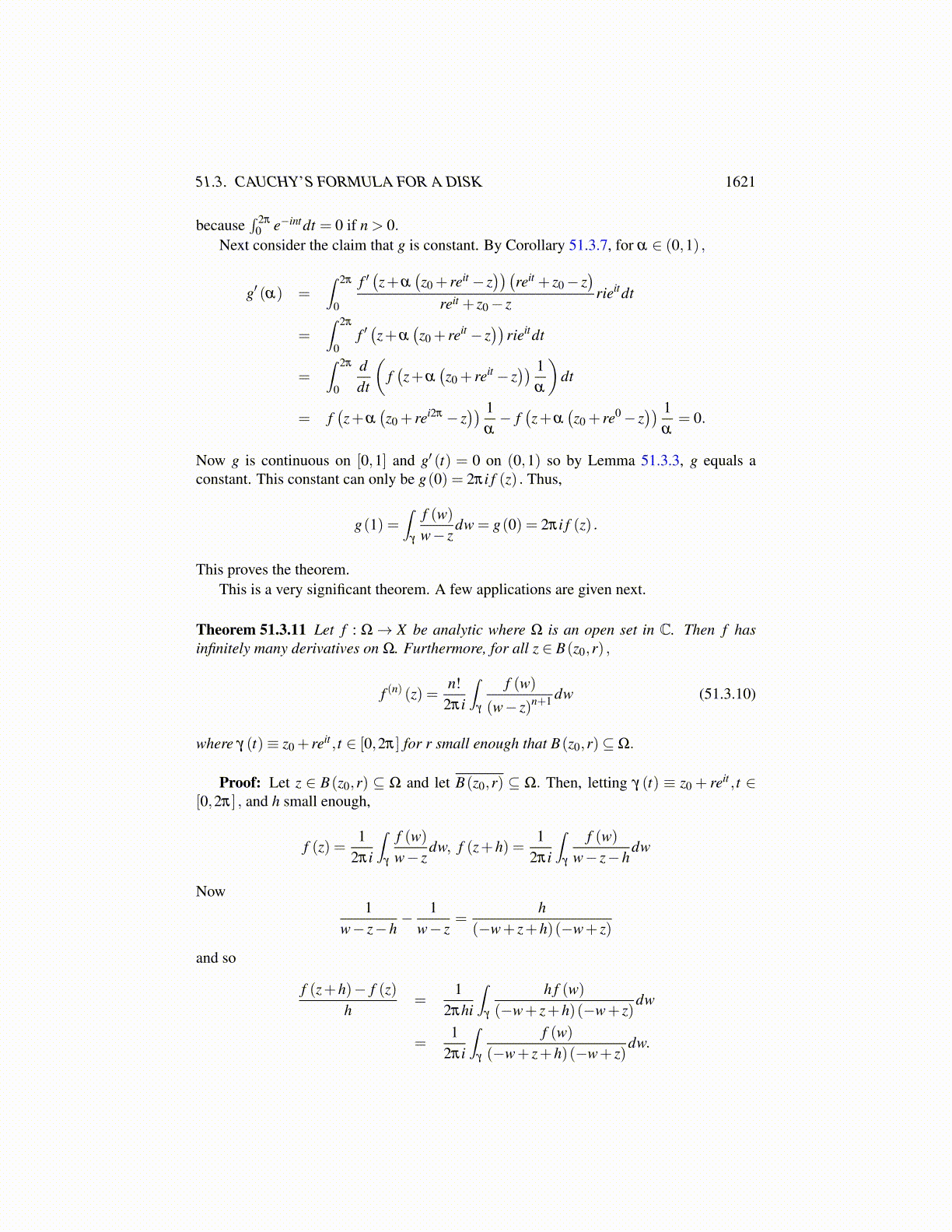
51.3. CAUCHY’S FORMULA FOR A DISK 1621
If you want to consider φ having values in X , a complex Banach space a similar resultholds.
Corollary 51.3.8 Let φ : [a,b]× [c,d]→ X be continuous and let
g(t)≡∫ b
aφ (s, t)ds. (51.3.7)
Then g is continuous. If ∂φ
∂ t exists and is continuous on [a,b]× [c,d] , then
g′ (t) =∫ b
a
∂φ (s, t)∂ t
ds. (51.3.8)
Proof: Let Λ ∈ X ′. Then Λφ : [a,b]× [c,d]→ C is continuous and ∂Λφ
∂ t exists and iscontinuous on [a,b]× [c,d] . Therefore, from 51.3.8,
Λ(g′ (t)
)= (Λg)′ (t) =
∫ b
a
∂Λφ (s, t)∂ t
ds = Λ
∫ b
a
∂φ (s, t)∂ t
ds
and since X ′ separates the points, it follows 51.3.8 holds.You can give a different proof of this.
Theorem 51.3.9 Let φ : [a,b]× [c,d]→ X be continuous and suppose φ t is continuous.Then (∫ b
aφ (s, t)ds
),t=∫ b
a
∂φ
∂ t(s, t)ds
Here X is a complex Banach space.
Proof: Consider the following set P which is where the ordered pair (t,h) will be.
c d(t,h)
This is so that both t and t +h are in [a,b] . Then for such an ordered pair, consider
∆(s, t,h)≡{
φ(s,t+h)−φ(s,t)h if h ̸= 0
φ t (s, t) if h = 0
Claim: ∆ is continuous on the compact set [a,b]×P.Proof of claim: It is obvious unless h = 0. Therefore, consider the point (s, t,0) .
∥∥∆(s′, t ′,h
)−∆(s, t,0)
∥∥= ∥∥∥∥φ (s′, t ′+h)−φ (s′, t ′)h
−φ t (s, t)∥∥∥∥